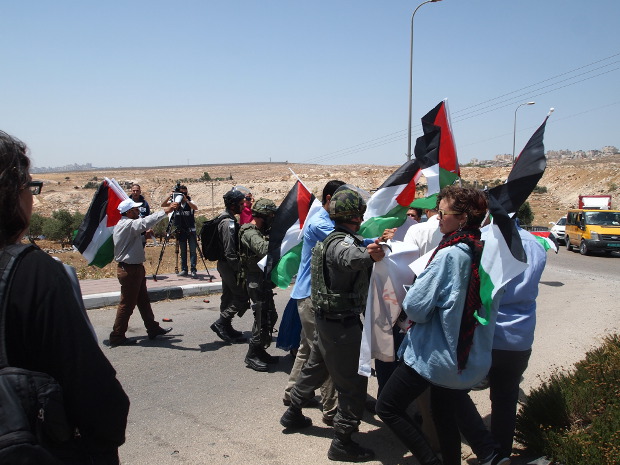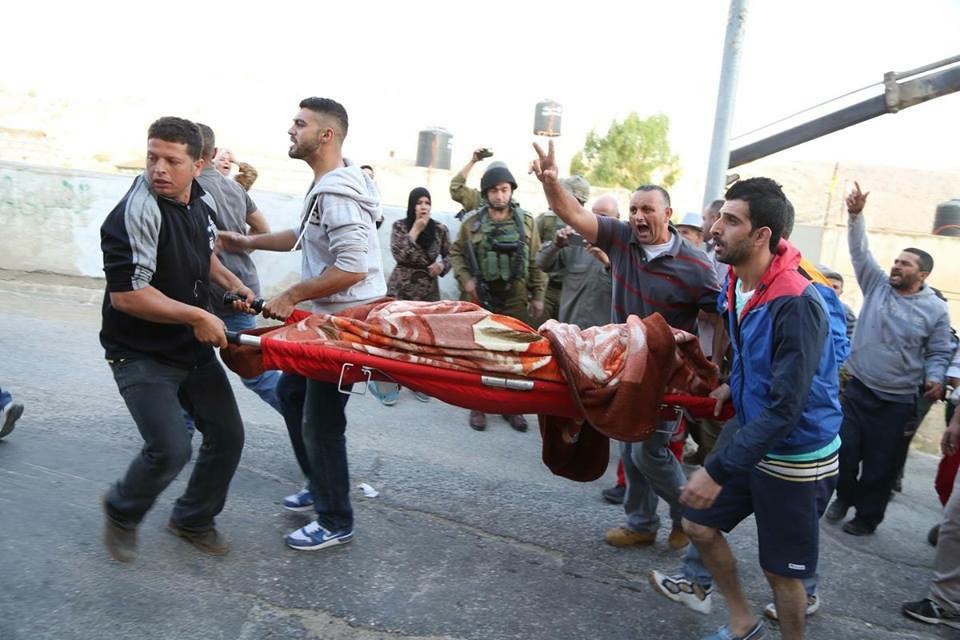Category: Ramallah
-
Protest commemorating one year anniversary of the killing of Mohammad Abu Khdeir met with military violence
2 July 2015, in honor of the first anniversary of the murder of Muhammad Abu Khdeir, Palestinian activists with international supporters blocked a settlers-only road leading to the illegal Adam settlement. Demonstrators cited this road as the road that the murderers took in their search for a Palestinian victim. Journalists, Palestinian and international activists, suffered…
-
Israeli forces try to violently suppress protest in Jalazone
14th June 2015 | International Solidarity Movement, Ramallah Team | Jalazone, Occupied Palestine On Friday June 12th in Jalazone, north of Ramallah, Israeli forces responded to a Palestinian protest against illegal Israeli settlements with rubber coated steel bullets, tear gas, stun grenades and live ammunition. The Israeli occupation forces also attacked journalists that were covering…
-
Israeli army murders Palestinian in Kafr Malek
14th June 2015 | International Solidarity Movement, Khalil Team | Kafr Malek, Occupied Palestine ***GRAPHIC IMAGE WARNING*** Abdullah Eyad Ghanayem, 21 years old, was killed by the Israeli army early morning around 3:00 AM in Kafr Malek, a village north Ramallah. According to a Palestine Red Crescent Society paramedic that contacted ISM, the soldiers invaded…



